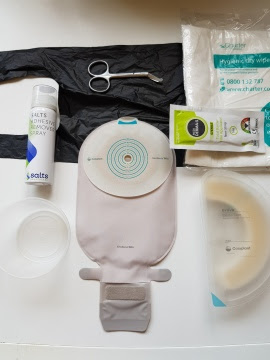Even if you live with an ostomy, you can still enjoy travelling. But plan and prepare ahead of your trip. Decide on the number of changes you will need. You must also think of things such as barrier strips, belts, skin protectants, and wipes. You should also cater for some extra changes in case of delays, failures or leakage. Better to have more than you need than not have enough.
If you are travelling by train or bus you will always have your luggage with your supply nearby. But in air travel, keep all your ostomy items in your hand luggage. It will be safer to have them with you than risk losing them. If you have to cut-to-fit wafer, you may need to pre-cut some flanges before starting your trip. This is to meet airline restrictions on travelling with sharp tools.
If your travel is for an extended period, you may not be able to take all your ostomy supplies in your hand luggage. But ostomy suppliers have distributors around the globe. You can arrange for your supplies before you travel. Ask for names of providers at your travel destination. Prepare the order for the items you will need while on your travels so you get them easier.
Air travel may cause gas build-up in your pouch during the flight. To prevent more buildup, avoid drinking beer or carbonated drinks. Also refrain from chewing gums or sucking candies during your flight take-off. Travelling by car? Avoid putting your ostomy supplies in the trunk unprotected from temperature changes.
Your ostomy flanges can be affected by extreme ranges of temperature changes. Travel to cooler or warmer, more humid places will need storing your supplies at the appropriate temperature. Also keep them out of direct sun rays.
A closed end pouch is better than the drainable pouch for of your trip. You can discard it in a Ziploc™ bag in the bathroom garbage. It may be more hygienic and easier than trying to find and sit on a toilet to empty a drainable pouch. But have some drainable pouches to manage diarrhea resulting from changing and unusal diets.
To enjoy swimming in your travel, consider using smaller stoma caps or mini pouches. These would be less obvious under your swimsuit or shorts. They will also be more suitable when the stoma function is predictable. Ostomy belts or a stoma guard can also protect your pouch system in sports and other activities. Your therapy nurse can advise you about availability of these items for your system.
If you use irrigation to manage your stoma, make sure the water is safe at your travel destination. If it is not safe, then do irrigations with bottled water to prevent diarrheal problems. It would be wise to discuss issues with your care provider before you travel. The advice you get will help you to enjoy your trip.





